By Audra Koscik
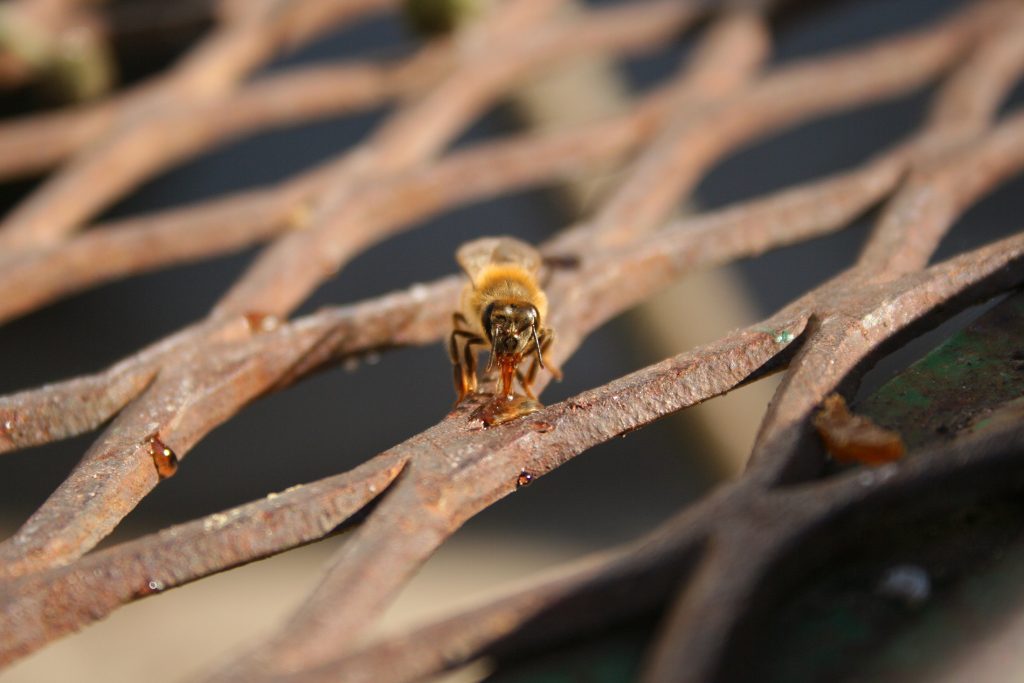
Walking around campus, one can easily get distracted by the bustle of Madison. Students chatter as they walk from class to class. Cars hum as they wait in traffic.
Allen Centennial Garden, an oasis on the west side of campus, provides a more tranquil atmosphere. Spring through fall, the Garden is full of flowers, fruits, and vegetables from around the world. In winter, many of these plants lie dormant, waiting patiently for warmer weather.
The Garden serves as an educational space for UW-Madison students and the surrounding communities. It is the living laboratory and public botanical garden of the Department of Plant and Agroecosystem Sciences.
Additionally, the Garden is home to a key part of our ecosystems: pollinators. Pollinators come in all shapes and sizes from bats to butterflies. A large portion of the food we eat requires pollinators. However, many pollinator species in Wisconsin face extinction.
Pollinators are threatened by loss of habitat. To help pollinators, Allen Centennial Garden started a prairie garden five years ago. This garden features native plants including big bluestem, little bluestem, cup-plant, two species of goldenrod, and bee balm. Additionally, the Garden has created a bee hotel.
Students from Bees Please, Engineers for a Sustainable World, and The People’s Farm built the bee hotel with support from Allen Centennial Garden, the Department of Entomology, and the Green Fund. The bee hotel uses materials from the Garden such as plant stems to create suitable lodging for native solitary nesting bees. These solitary nesting bees are essential to our ecosystems but are threatened by habitat loss.
The Garden also has a hive for honey bees. Interestingly, honey bees are not native to North America, but they are often raised by beekeepers and help to pollinate native and crop plants. Garden staff collect honey and check the bees regularly, providing insight on our local pollinators.
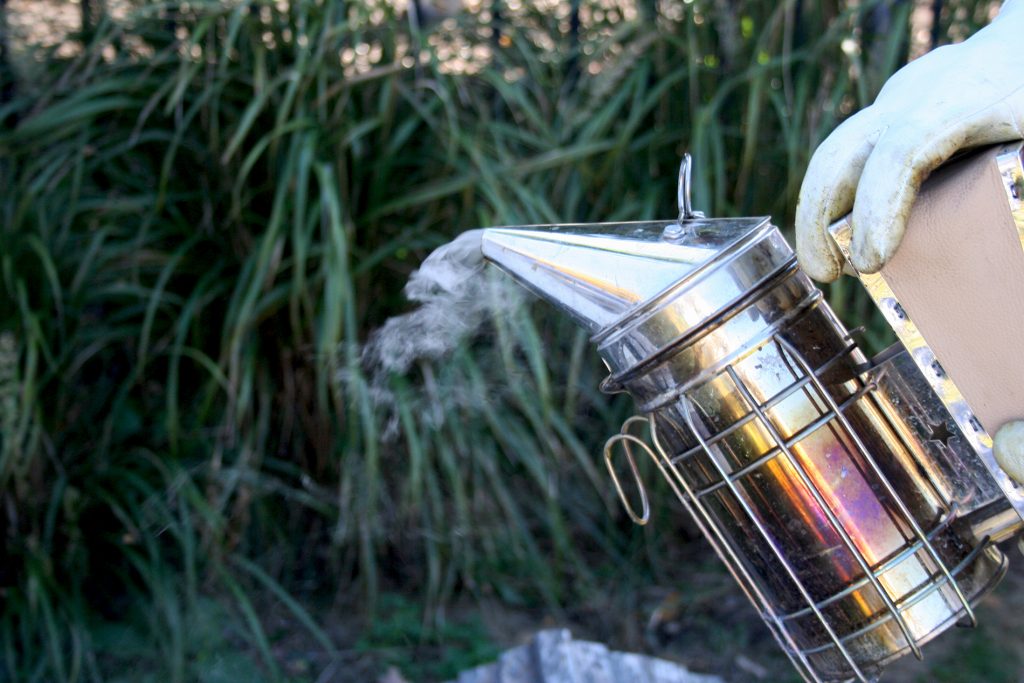
The first step to opening the hive is to calm and divert the bees. Honey bees have unique ways of communicating. When they sense danger, they release a pheromone which warns the other bees to prepare to attack. To safely open the hive, staff use a bee smoker. The smoke masks this pheromone, keeping the bees calm. The smoke also causes the bees to leave the hive as they instinctively associate smoke with fire.
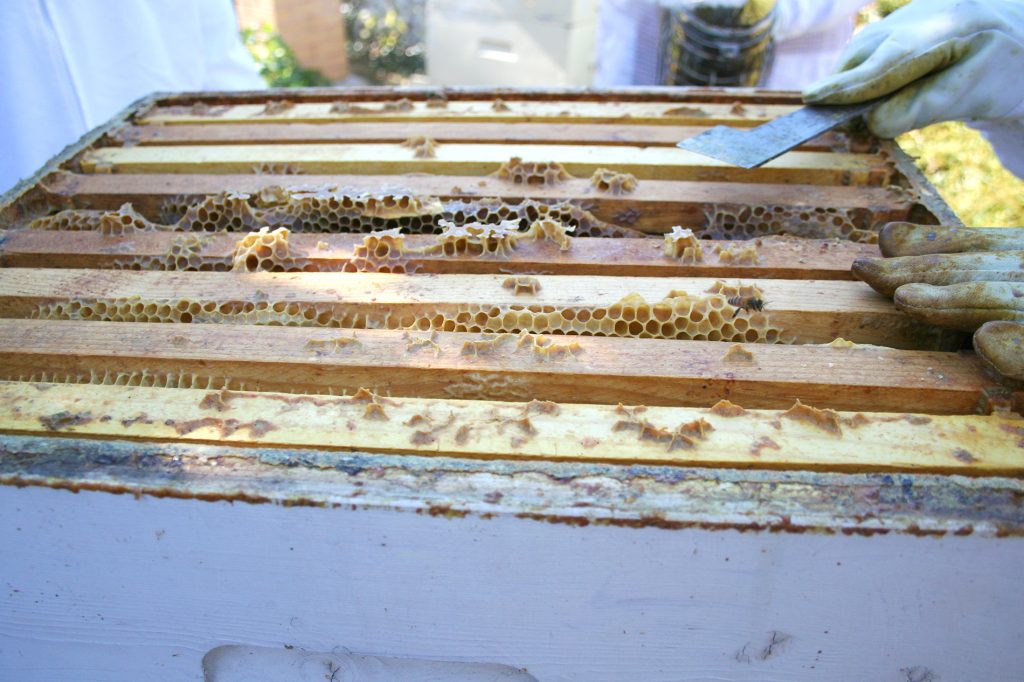
Once staff have used the bee smoker, they are able to pry the lid off of the hive. Frames rest inside the hive and hold the honeycombs bees have built. Staff gently leverage out the frames. Removing the first frame requires extra care since the beeswax from the honeycombs may hold frames in place. Too much force can kill bees and raise their alarm.
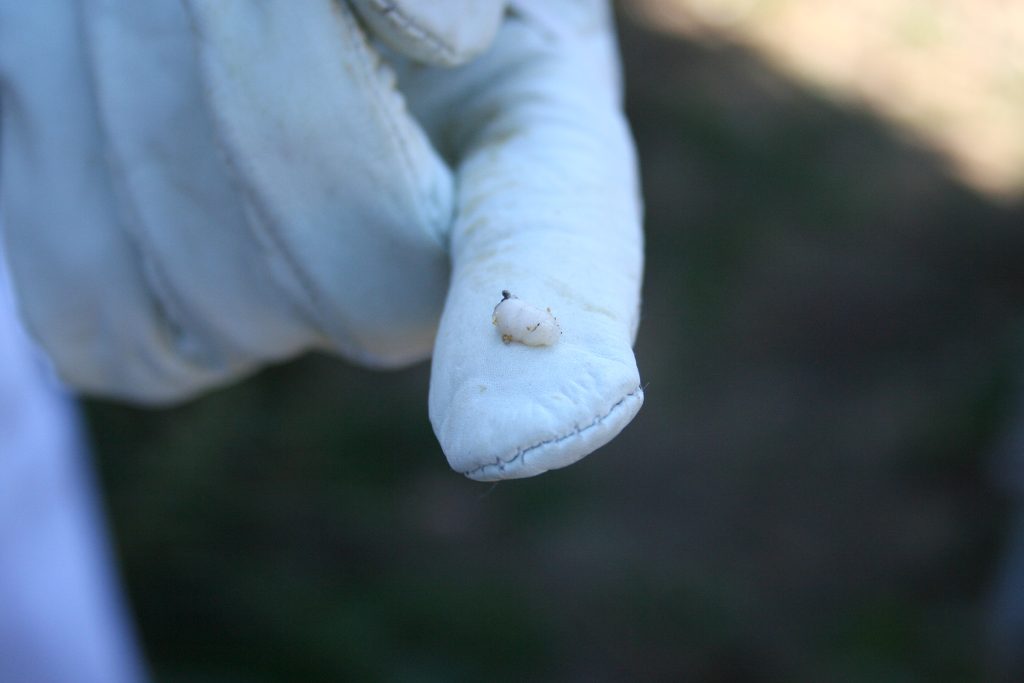
Honeycombs hold not only honey, but also the bees’ offspring, also known as their brood. Here, a staff member holds up a tiny bee larva. The queen bee lays eggs in the honeycombs. These eggs hatch into larvae and then create a cocoon to become pupae. The pupae break from their cocoons and emerge as adult bees.
A queen honey bee can lay 2,000 eggs per day. She stays in the lowest section of the hive. However, this stray larva was found while collecting honey.
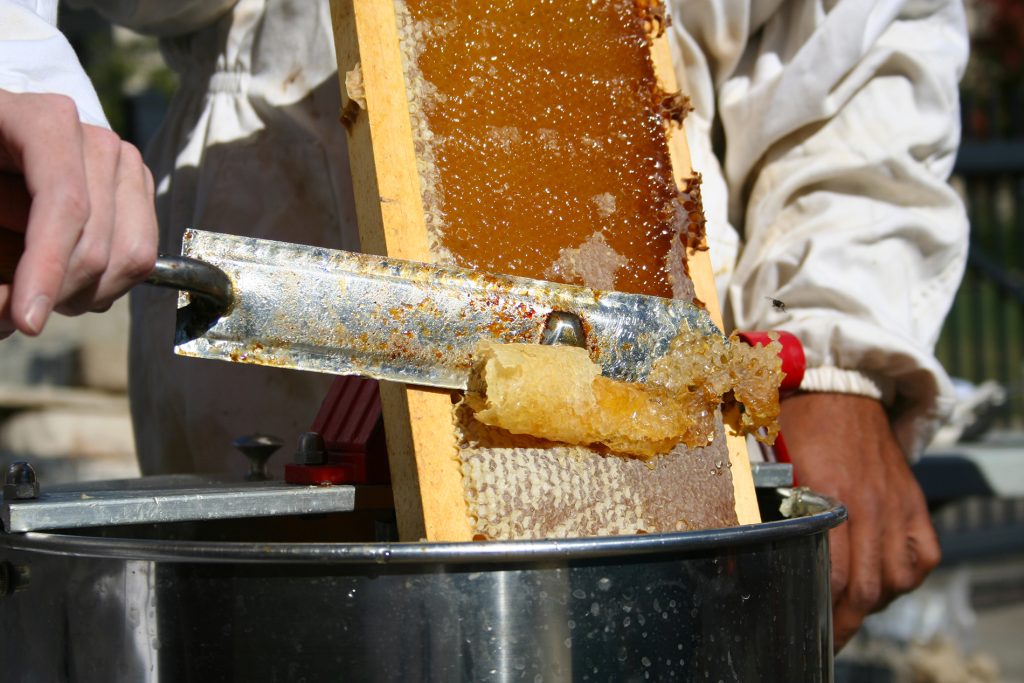
Staff remove the top frames and take them far away from the hive. This prevents the entire hive from swarming to the frames.
Once staff move the frames, they begin collecting the honey. The honeycombs have a layer of wax covering the honey. Staff use an electric uncapping knife. This knife is heated to melt the top layer of wax off as it slices.
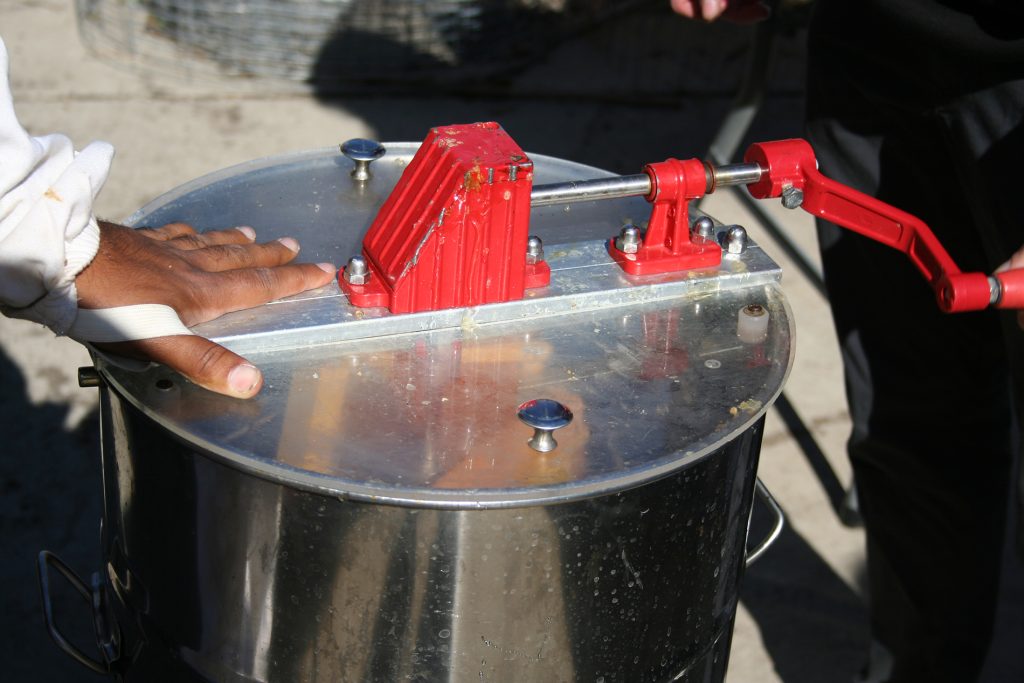
The frames are placed in a honey extractor. The extractor has a crank which spins the sheets of uncapped honeycomb. This creates a centrifugal force which pulls the honey from the frames and onto the walls of the extractor.
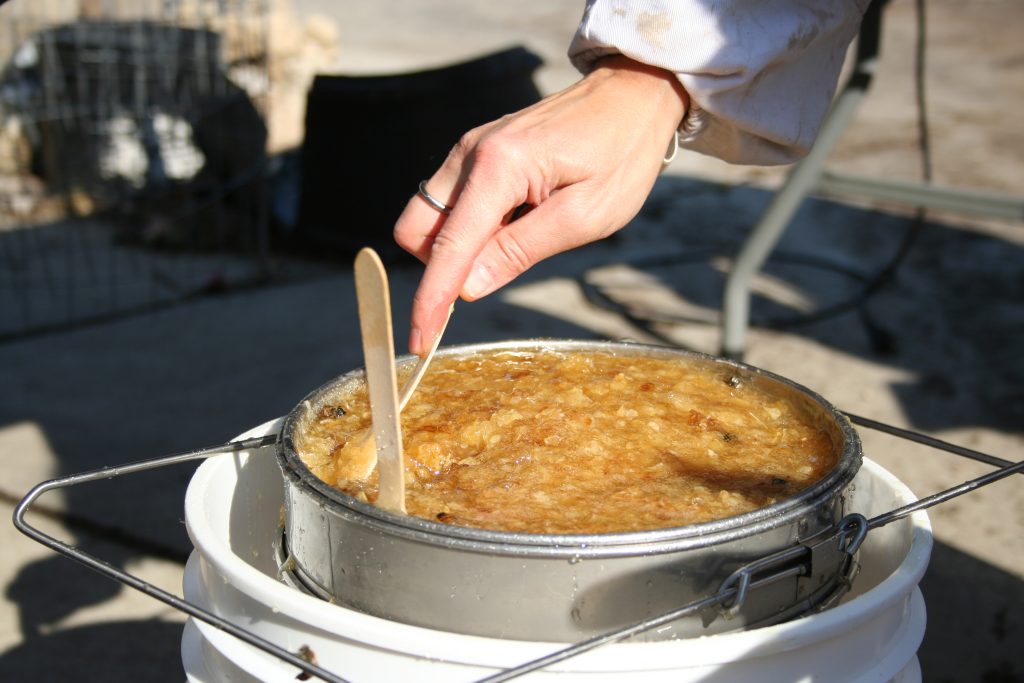
Once the honey has been extracted, staff pour the contents into a strainer. This process separates the gelatinous honey from the chunks of beeswax. After this step, the honey is ready to use.
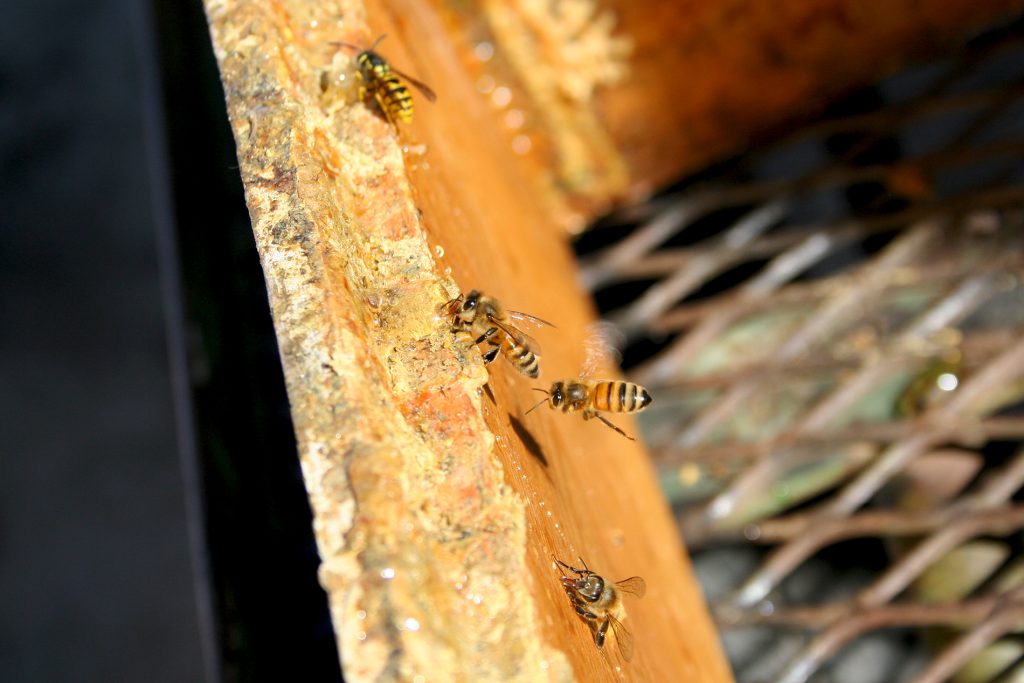
While collecting honey, many insects gather to eat the drops of honey and beeswax left behind. Here, a few worker honey bees and a yellow jacket collect honey on the cart used to move the frames. Overnight, more honey bees will find all the honey that has been left behind outside and clean it up, bringing it back to the hive.
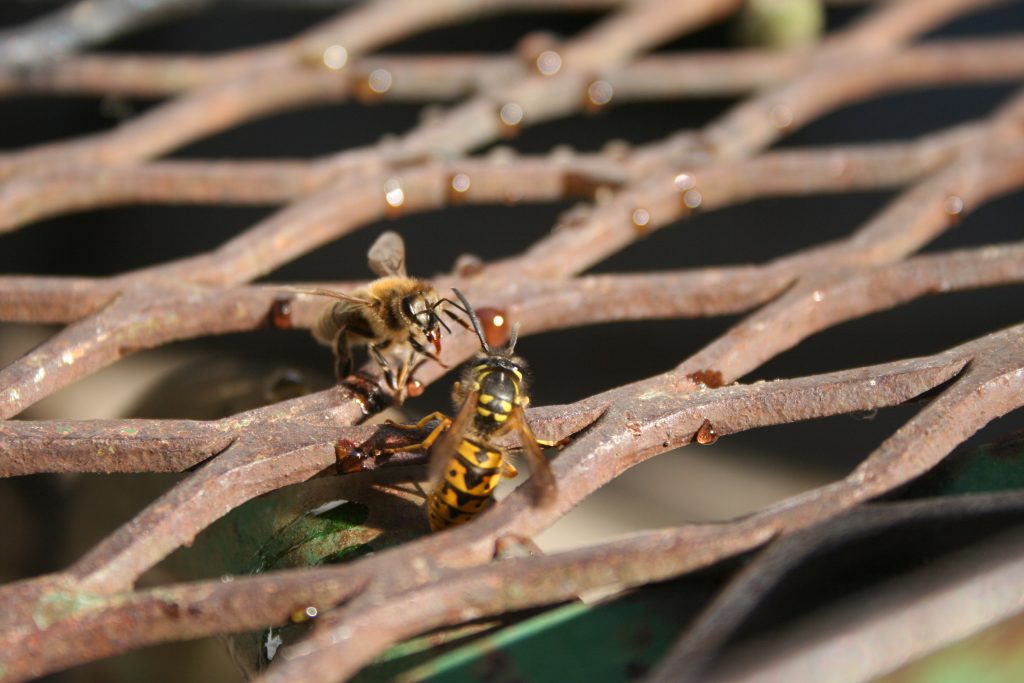
While inspecting the hive, staff noticed the presence of a few yellow jacket wasps. These wasps are dangerous for the bees as yellow jackets occasionally raid honey bee hives. In this process, yellow jackets kill worker bees, eat their offspring, and eat the honeycomb.
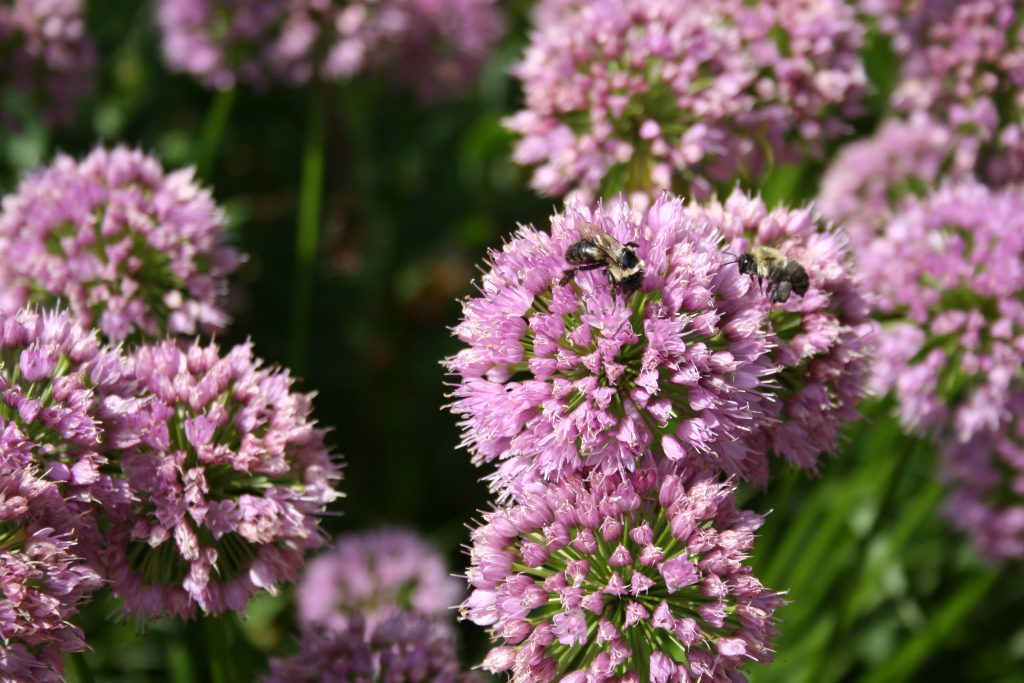
The Garden is buzzing with all kinds of other pollinators from sweat bees to bumble bees. Here, two bumble bees forage for pollen.
By providing an oasis full of native and international plants, the Garden creates habitats for pollinators and educational opportunities for our community.
